PLANETARY MOVEMENT
On any given night, the planets look stationary against the
background stars. But watch over a period of a few days for Venus or Mars (with orbital periods of 225 days and
1.88 years) and you can easily see why they are
called planets, from Greek, meaning wanderers.
Farther out, Jupiter and Jupiter and Saturn (11.9 and 29.4 years) take
longer for movement to be noted, but move they do. Farther out yet
are much slower moving Uranus and Neptune (83.7
and 163.7 years), but even these slowly trace their orbital courses
against the stellar scene. Most of the times the planets move
directly, to the east through the constellations of the
Zodiac. But as our Earth laps the slower-moving outer planets (or
as the faster inner planets lap us), they seem to stop and go
backward into retrograde. Direct motion is shown below by Venus
and Mars and by Uranus, while retrograde is seen for both Jupiter
and Saturn.
Between March 9, 2004 (left) and just two days later, March 11,
2004 (right), Venus (at bottom) and Mars (below the Pleiades star cluster) move very
noticeably to the east against the stars of Aries and Taurus.
Jupiter moved some 10 degrees to the west in retrograde through Taurus
between October of 1988 (left) and January of 1989 (right) against
the background of the Hyades (bottom)
and Pleiades (upper left).
This pair of identically-exposed photographs also shows just how
much we have lost of the nighttime sky. The one on the left was
taken from town, the one on the right from a dark mountaintop. At
left, none of the faint stars can be seen.
The movements of Jupiter (the brightest body in the picture) and
Saturn (the bright one to the right of Jupiter) are easy to see
against the background of Taurus, both
close to the Hyades and the Pleiades. At left, on October 12,
2000, the planets have just begun retrograde; at right, February 16, 2001, they have already
resumed direct motion, but are still far west of their previous
position.
Between August 18, 2000 (left) and October 6, 2001 (right),
Uranus slowly moved easterly against the stars of
Capricornus.
Neptune, much farther away and fainter, is just visible at
right.
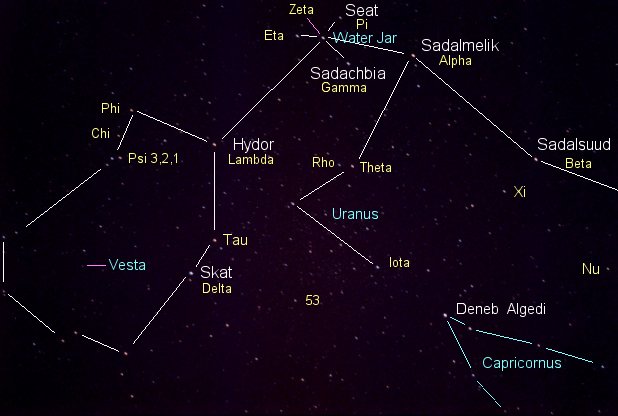 Then follow Uranus as it passed through Aquarius some four years later, seen here on October 9,
2004.
Then follow Uranus as it passed through Aquarius some four years later, seen here on October 9,
2004.
|
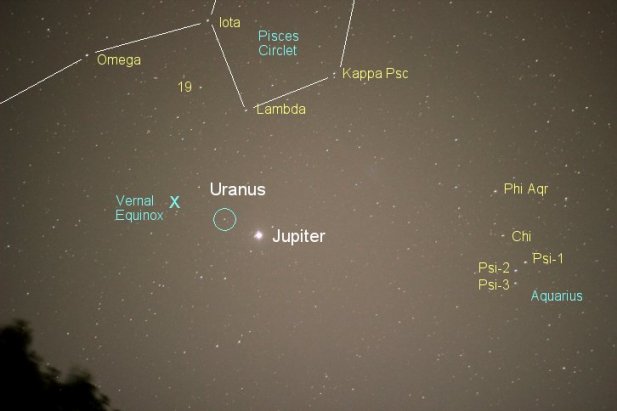 It took Uranus another six years to make it to southwestern Pisces, where it accompanied Jupiter, as
seen on October 2, 2010. On the other hand, during the 10 years
since it was last in Taurus (as seen above), Jupiter had moved more
than three-fourths of the way around the sky.
It took Uranus another six years to make it to southwestern Pisces, where it accompanied Jupiter, as
seen on October 2, 2010. On the other hand, during the 10 years
since it was last in Taurus (as seen above), Jupiter had moved more
than three-fourths of the way around the sky.
|
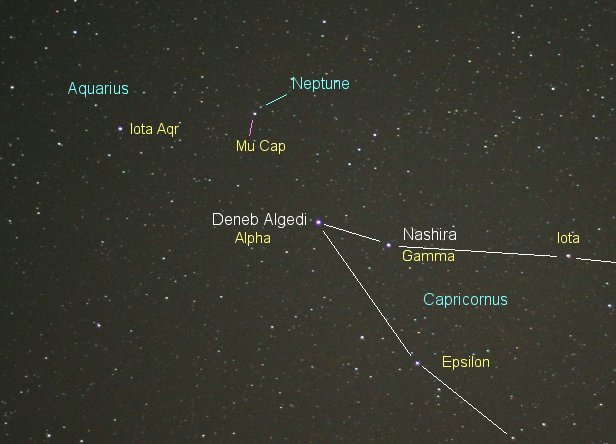 Uranus is speedy compared to Neptune. After a full nine years, the
more distant planet (see here on November 8, 2010) had not even
made it out of Capricornus. Neptune is seen close to its 1846
discovery position (the actual anniversary on July 12,
2011). While it has gone around but once since it was found,
Jupiter has circled the Sun some 14 times.
Uranus is speedy compared to Neptune. After a full nine years, the
more distant planet (see here on November 8, 2010) had not even
made it out of Capricornus. Neptune is seen close to its 1846
discovery position (the actual anniversary on July 12,
2011). While it has gone around but once since it was found,
Jupiter has circled the Sun some 14 times.
|

Copyright © James B. Kaler.
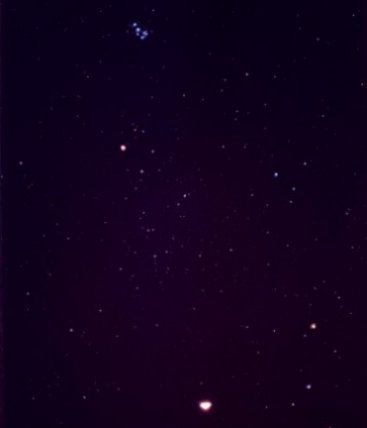
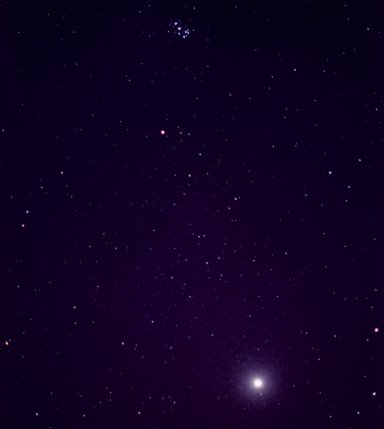


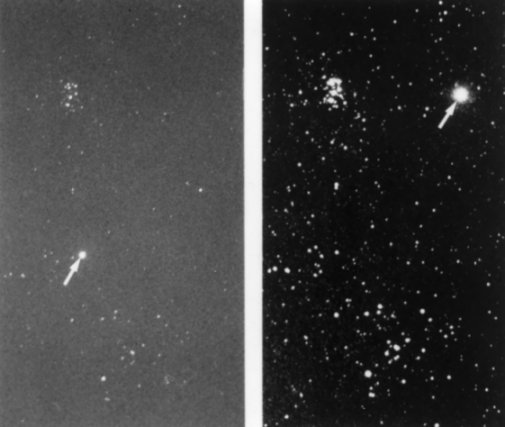
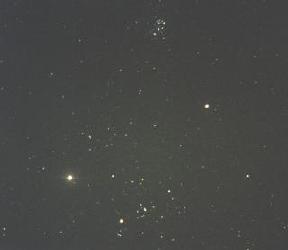
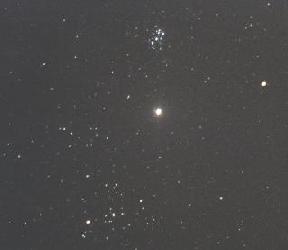
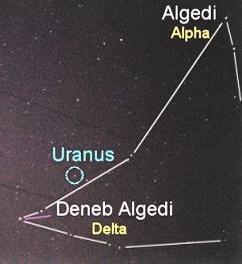
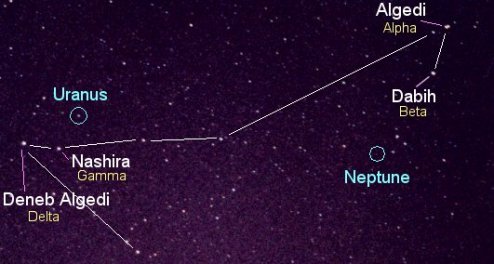
 Then follow Uranus as it passed through Aquarius some four years later, seen here on October 9,
2004.
Then follow Uranus as it passed through Aquarius some four years later, seen here on October 9,
2004.
 It took Uranus another six years to make it to southwestern Pisces, where it accompanied Jupiter, as
seen on October 2, 2010. On the other hand, during the 10 years
since it was last in Taurus (as seen above), Jupiter had moved more
than three-fourths of the way around the sky.
It took Uranus another six years to make it to southwestern Pisces, where it accompanied Jupiter, as
seen on October 2, 2010. On the other hand, during the 10 years
since it was last in Taurus (as seen above), Jupiter had moved more
than three-fourths of the way around the sky.
 Uranus is speedy compared to Neptune. After a full nine years, the
more distant planet (see here on November 8, 2010) had not even
made it out of Capricornus. Neptune is seen close to its 1846
discovery position (the actual anniversary on July 12,
2011). While it has gone around but once since it was found,
Jupiter has circled the Sun some 14 times.
Uranus is speedy compared to Neptune. After a full nine years, the
more distant planet (see here on November 8, 2010) had not even
made it out of Capricornus. Neptune is seen close to its 1846
discovery position (the actual anniversary on July 12,
2011). While it has gone around but once since it was found,
Jupiter has circled the Sun some 14 times.